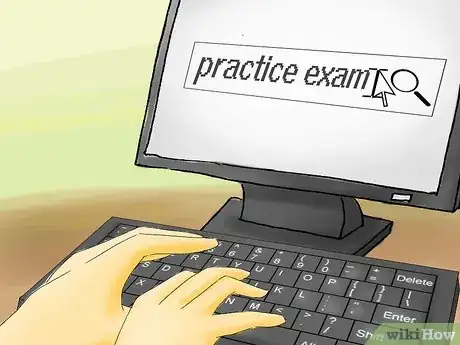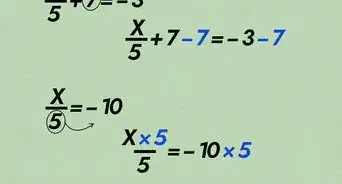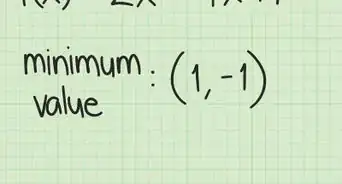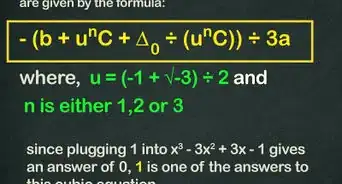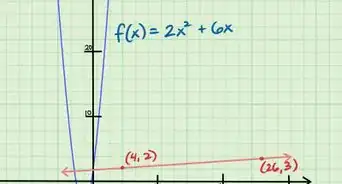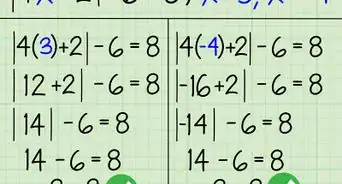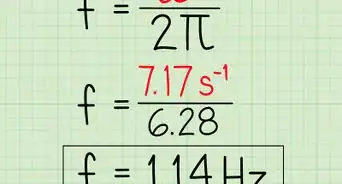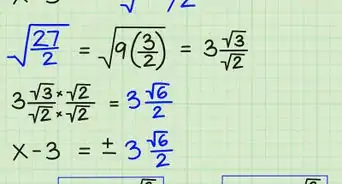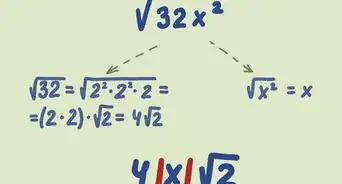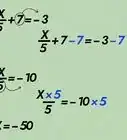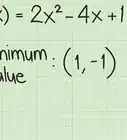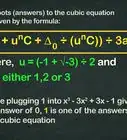This article was co-authored by wikiHow Staff. Our trained team of editors and researchers validate articles for accuracy and comprehensiveness. wikiHow's Content Management Team carefully monitors the work from our editorial staff to ensure that each article is backed by trusted research and meets our high quality standards.
This article has been viewed 17,635 times.
Learn more...
Integrated Algebra is a math class that teaches curriculum from multiple branches of math and integrates them together. This type of course teaches aspects of algebra, geometry, trigonometry, and analysis in the same school year. As a New York state math class, proficiency is tested with a standardized exam called the Regents at the end of the year. With some time and practice, you can pass the final exam and the class!
Steps
Learning the Material
-
1Do your homework. The homework is there to check your understanding of the mathematical concepts you are learning. If you don’t understand how to do the homework, then you don’t understand the concept. Homework helps you identify what you do and don’t know.[1]
- The more problems you practice with, the more you will understand how to problem solve.
- If you have trouble remembering to do your work, keep a planner and write down all of your homework assignments.
-
2Pay attention in class and take notes. Being in class isn’t enough; you actually have to pay attention and take notes. The act of taking notes will help you remember the material later. In addition to your class notes, take notes while you are studying the text and answering problems. These extra notes will help you gain a true understanding of the material.
- Review your notes from the day that night to solidify the material in your head.
Advertisement -
3Ask questions in class. If you are having trouble understanding an equation or concept, ask the teacher about it. More than likely, another one of your classmates has a similar question.[2] The teacher is there to teach you, so ask all of the questions you need to.
- If you feel like you are really behind and don’t want to speak up in class, stay after class and talk to your teacher one-on-one. They can help you then or setup a time to meet later to get you extra help.
-
4Learn the important concepts. Integrated Algebra is a bit different from a traditional math class because it teaches algebra, geometry, trigonometry, and statistics together instead of separate classes. There are many concepts you must be familiar with including:
- Algebra: algebraic proportions; addition and subtraction of fractional expressions; polynomial, binomial, and monomial expressions; factoring expressions (FOIL method); absolute value and exponents; linear and quadratic equations; etc.
- Geometry/Trigonometry: calculating area and perimeter of polygons and circles; determining volume and surface area of solids and cylinders; finding sine, cosine, and tangent of right triangles; using the Pythagorean Theorem; etc.
- Statistics: evaluating reports and graphs; probability of an event occurring; determining the number of possible arrangements of a list of items; knowing conditional probabilities; differences between causation and correlation; etc.
-
5Seek out extra credit opportunities. If you are close to a passing grade, you may be able to do some extra credit work to bump your grade into passing. If you show your teacher you are really serious about the extra credit and learning the material, they will be more likely to help you out.
- Take the extra credit assignments seriously. They may be your only chance to get your grade up to passing.
Studying for the Regents Exam
-
1Study tests and quizzes from the class. Through the school year you have been given tests and quizzes to track what you have learned. Use these materials to your advantage. Correct the questions you got wrong and retake the test or quiz like it’s the first time.
- Some concepts may still be fresh in your mind, while others you may have forgotten. Spend more time focusing on the ones you have forgotten.
-
2Take multiple practice exams. There are many materials online that offer free practice exams. Take advantage of these. Sit down and the take the test as you would for the actual exam. Work in a quiet room or library to avoid getting distracted.
- There are also books that can be purchased with even more practice tests available.
-
3Complete the study guide. Most teachers will give you a study guide before the exam that will cover the material presented on the exam. Answer all of the questions in the study guide. Go back and study the questions that were harder for you to answer.
- If your teacher does not provide a study guide, ask them for other available study resources, such as the Regents Exam Prep Center.
-
4Review exams from previous years. Ask your teacher if they have copies of exams from previous years. It is also possible to find some online.[3] Go through the exam and answer as many questions as possible. Check your answers to make sure they are right.
- If you don’t understand a question, ask your teacher to help you work through it.
-
5Ask for extra help. If you find that you are really behind and don’t understand most of what is happening in class, you may need a tutor. Getting a one-on-one tutor or signing up for a test prep class may be just what you need to pass the final exam.
- Talk to your parents and your teacher about getting the extra help you need.
-
6Memorize the relevant formulas. There are a lot of formulas in math that get used on a regular basis. Although you are provided with a reference sheet, it will not have every formula that you will need for the exam. Identify the formulas that you will need that aren’t on the reference sheet and make sure you know those.
- Use flashcards to help you memorize.
Passing the Regents Exam
-
1Answer the easy questions first. In order to maximize your time on a test, answer the easiest questions first. If you’re unsure about how to solve a problem, skip it and move on to one that you know. This will ensure you answer as many questions as possible.
- While you’re answering other problems, you may remember how to do the harder ones.
- Don’t forget to go back at the end and tackle the harder questions.
-
2Read the problem completely before answering. Tests can be daunting because you don’t want to run out of time, but taking the time to read the problem completely allows you to understand it and properly answer it. If you glance at it too quickly, you might answer the wrong question or answer it incompletely.
- Pay close attention to what the question is asking. If the question says “Give the answer to the hundredths decimal place”, you don’t want to lose points because you rounded to the wrong place.
-
3Write down what you know for partial credit. You may not be able to answer every question, but you can strive for partial credit. Showing that you know at least part of the concept can earn you points and get you that much closer to a passing grade.
- Work the problem as far as you can to maximize your partial credit.
- Even if you only know equations, write these down and see if they jog your memory about how to go about solving.
-
4Draw diagrams whenever appropriate. Drawing a diagram allows you to properly visualize the problem, label everything appropriately, and view the problem from different perspectives. Take the time to sketch out the diagram as accurately as possible.
- This is particularly helpful for geometry problems.
-
5Recognize and ignore extra information. You may not have to use every number because some math problems include extra information that you don’t actually need. These types of problems are testing your ability to recognize only the needed information.
- If you realize that some numbers aren’t necessary to the problem, cross them out so you don’t get distracted by them as you solve.
-
6Check your answers if you have extra time. When you finish the exam, don’t turn it in right away. If you have extra time, go back and double check your answers. Start with the problems you had the most trouble with.
- Ask yourself: Does this answer make logical sense? If a question is asking about the area of something and your answer is negative, that doesn’t make sense. Some part of the calculation is wrong.
-
7Be aware of the units. Pay close attention to the units used in the problem. You may need to convert to different units for the final answer. Write down the units at every step and make sure everything cancels out properly to give you the correct units at the end.
- If the units don’t match up, you may need to rethink the way you are solving the problem.






